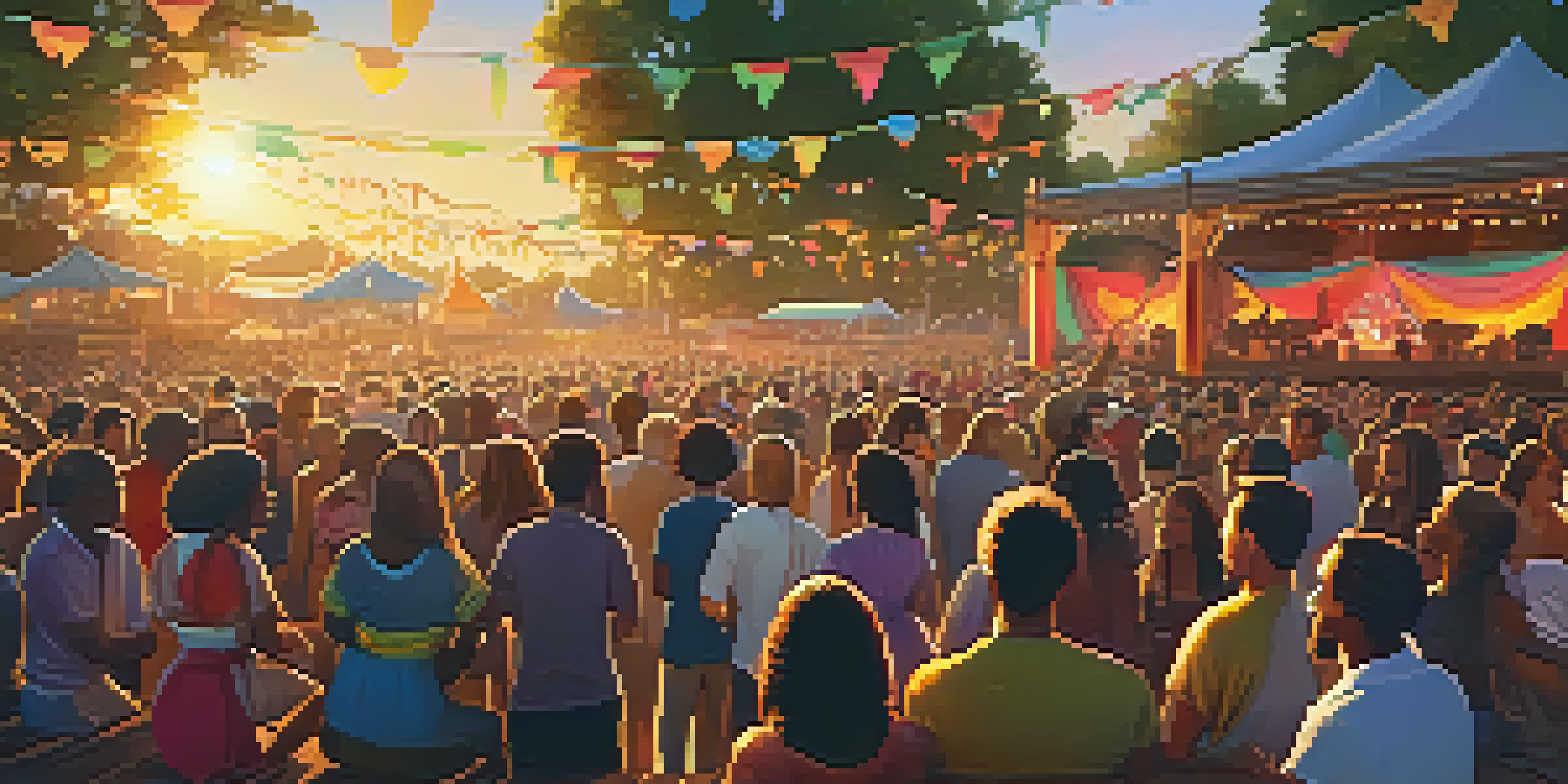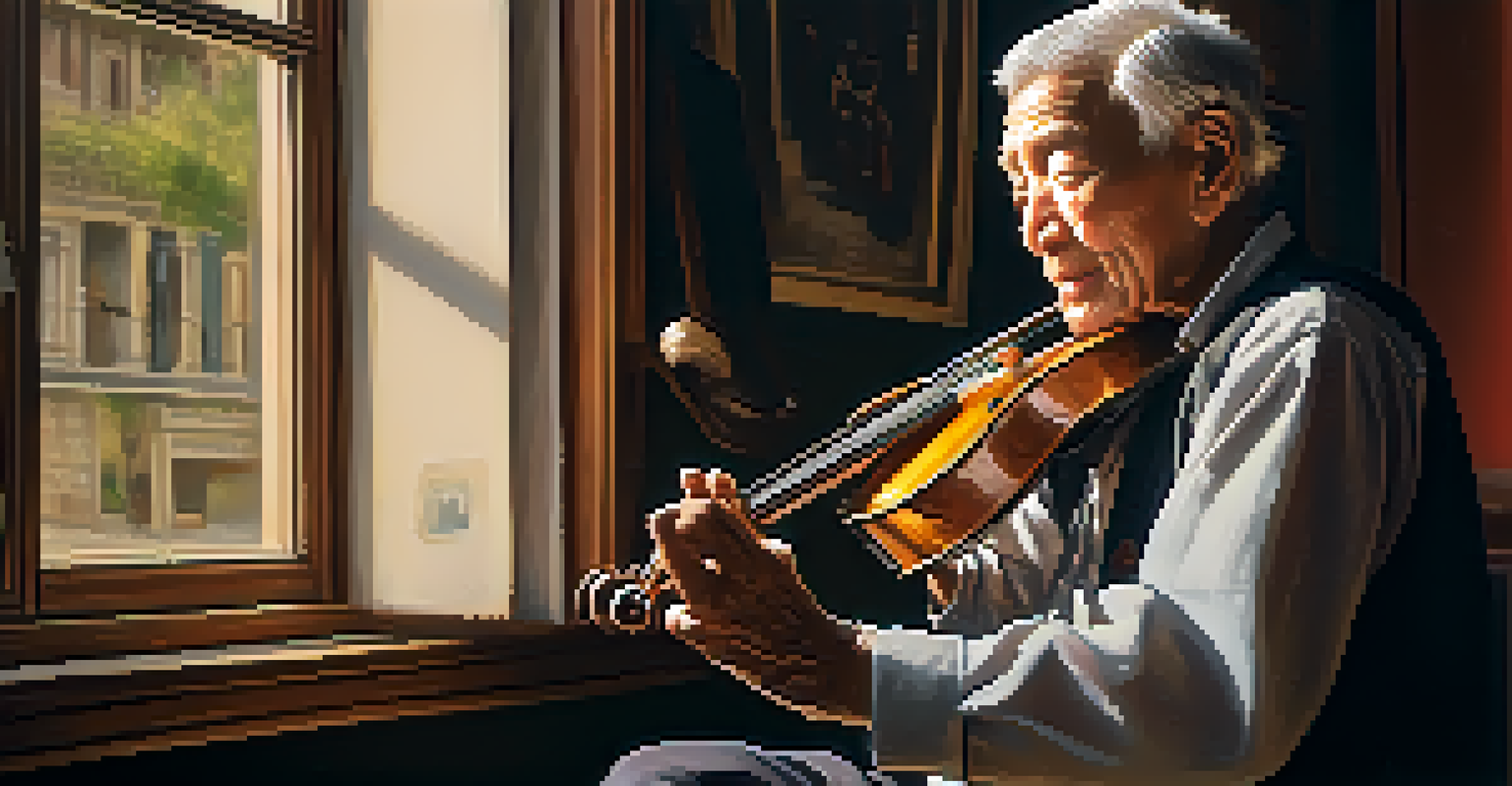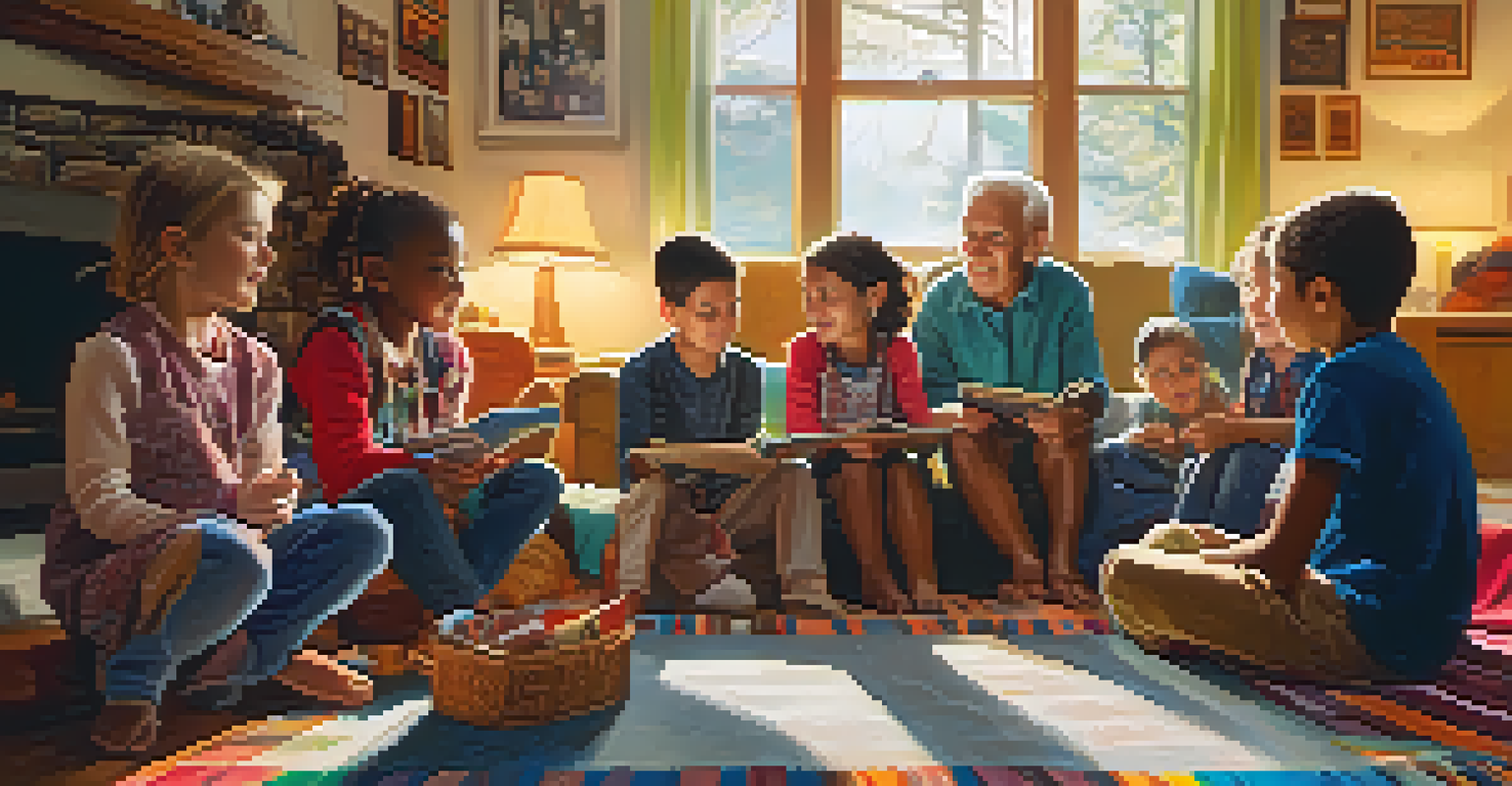The Importance of Oral Traditions in Music Preservation

Understanding Oral Traditions in Music
Oral traditions in music refer to the practice of passing down songs and musical knowledge through generations without written records. This method relies on memory and performance, making it a dynamic form of cultural expression. Just as stories are told around a campfire, music is shared in communities, fostering a sense of belonging.
Music can change the world because it can change people.
These traditions often adapt over time, changing with each storyteller or musician, which helps keep the music relevant and engaging. Think of it like a game of telephone; each person adds their unique twist, making the final version a blend of old and new. This fluidity not only preserves the essence of the music but also allows it to evolve.
Oral traditions serve as a vital link to cultural identity and heritage, connecting individuals to their roots. They reflect the values, experiences, and emotions of a community, encapsulating history in melodies and lyrics. By understanding this concept, we can appreciate the rich tapestry of music that oral traditions create.
The Role of Storytelling in Music
Storytelling is at the heart of many musical traditions and serves as a vehicle for cultural expression. Through songs, stories of love, struggle, and triumph are conveyed, making the music more relatable and memorable. Much like reading a good book, listeners are drawn into a narrative that resonates with their own experiences.

For instance, folk tales often intertwine with melodies, enabling the listener to feel the weight of history and emotion. This connection can be seen in various genres, from blues to folk music, where personal and communal stories are shared. When a musician performs, they are not just singing; they are narrating a tale that has been passed down through time.
Oral Traditions Preserve Culture
Oral traditions in music connect communities to their cultural identity and heritage through the dynamic sharing of songs and stories.
By preserving these stories within the music, communities maintain their cultural identity and foster a sense of continuity. Each performance becomes a living archive, breathing life into the past while creating space for the present. This unique blend of narrative and melody is what makes oral traditions so powerful in music preservation.
Cultural Identity and Oral Music Traditions
Music is a powerful tool for expressing cultural identity, and oral traditions play a crucial role in this expression. They allow communities to share their unique experiences, beliefs, and values through song. Whether it's a celebration, mourning, or everyday life, music captures the essence of a culture in a way that words alone cannot.
The art of storytelling is reaching its end because the epic side of truth, wisdom, is dying out.
For example, Native American powwows feature songs and dances that reflect their history and spiritual beliefs, offering insight into their way of life. This cultural richness is preserved through oral traditions, ensuring that future generations can connect with their heritage. The melodies and rhythms become a part of the community's identity, transcending time and space.
In an increasingly globalized world, maintaining these traditions is essential for cultural diversity. Oral music traditions remind us of the beauty of different ways of life, encouraging respect and appreciation among various cultures. They are not just relics of the past; they are vital expressions of who we are as humans.
Challenges Facing Oral Traditions Today
Despite their importance, oral traditions in music face several challenges in today's world. The rise of digital technology and globalization has led to the marginalization of many traditional forms of music. As people increasingly turn to recorded music, the live performances that sustain oral traditions may dwindle, risking the loss of these rich cultural practices.
In addition, younger generations may not have the same opportunities to learn from elders, leading to a disconnect from their musical heritage. The result is a potential loss of unique cultural expressions as traditional songs fade into obscurity. This highlights the urgent need for communities to prioritize the transmission of their musical traditions.
Storytelling Enhances Musical Impact
Storytelling within music makes it relatable and memorable, allowing audiences to connect deeply with the emotions and history conveyed.
Efforts to document and revitalize these traditions are essential for preservation. Workshops, community gatherings, and educational programs can foster an appreciation for oral music. By creating spaces where these traditions can thrive, we ensure that they continue to be a vibrant part of our cultural landscape.
The Impact of Technology on Oral Traditions
Technology has transformed the way we experience and preserve music, offering both challenges and opportunities for oral traditions. On one hand, digital platforms allow for the documentation and sharing of traditional music worldwide, reaching audiences that may never have encountered it otherwise. This accessibility can help to preserve these traditions by introducing them to new listeners.
However, the reliance on technology can also lead to a decline in live performances, which are essential for the survival of oral traditions. When music is consumed through screens, the communal aspect of sharing and learning from one another may diminish, leaving behind a more isolated experience. It’s like reading a novel; while it can be enjoyable, nothing compares to the shared experience of a live reading.
To strike a balance, communities can leverage technology while still prioritizing live performances and storytelling. Recording traditional songs and sharing them online can serve as a bridge, enticing younger audiences to explore their cultural roots. By embracing technology in a mindful way, we can ensure that oral traditions continue to flourish.
Educating Future Generations on Oral Traditions
Education plays a crucial role in preserving oral traditions, as it equips future generations with the knowledge and skills to carry them forward. Schools and community programs can introduce students to the importance of oral music traditions, encouraging them to engage with their own cultural backgrounds. This connection fosters a sense of pride in their heritage.
Hands-on experiences, such as workshops led by traditional musicians, provide invaluable opportunities for learning. Students can immerse themselves in the art of storytelling through song, gaining an appreciation for the complexities of their musical heritage. Imagine learning to play an instrument while hearing the stories behind the songs; it creates a deeper understanding.
Technology Challenges Oral Traditions
While technology can help document and share oral traditions, it also risks diminishing live performances, essential for their preservation.
By integrating oral traditions into educational curricula, we empower young people to become stewards of their culture. When they understand the significance of these traditions, they are more likely to pass them on. This cycle of learning and sharing ensures that the rich tapestry of music continues to thrive for generations to come.
Celebrating Oral Traditions in Modern Contexts
To truly appreciate the importance of oral traditions in music preservation, we must celebrate them in modern contexts. Festivals, concerts, and cultural events can serve as platforms to highlight traditional music, bringing communities together to honor their heritage. These celebrations not only showcase the music but also the stories and values embedded within it.
For instance, events that feature local musicians sharing their oral traditions can inspire younger audiences to explore their roots. These gatherings create a vibrant atmosphere where culture is experienced and celebrated, reinforcing the idea that oral traditions are alive and evolving. Just like a potluck, everyone brings their unique dish, contributing to a rich communal experience.

Moreover, incorporating oral traditions into contemporary music can bridge the gap between generations. When modern artists draw inspiration from traditional songs, they create a fusion that resonates with today’s audience. This collaboration fosters a deeper understanding and appreciation for the past while ensuring that these vital traditions remain relevant in our ever-changing world.